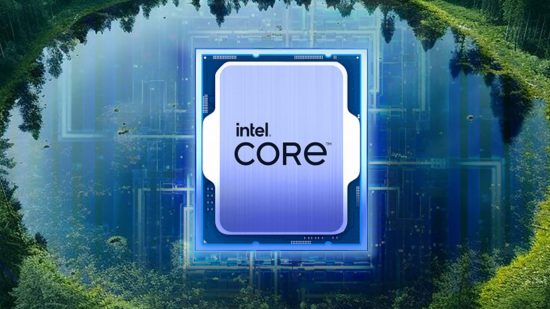We thought we had seen the last Intel CPU series based on its aging LGA1700 socket, but recent rumors have suggested we’ll be getting one more lineup of chips that will fit into these old motherboards. What’s more, the very latest rumor suggests there could be reason to be quite excited for the upcoming Bartlett Lake-S CPU launch, as there could be variants of the chips that ditch E-Cores and use only P-Cores for pure desktop PC power.
The new Intel processor rumor hints at the company potentially finding a way to cunningly sneak a few chips onto our best gaming CPU list without the need for a completely brand-new architecture. While its 14th gen CPUs were impressive in some ways, for most gamers and desktop PC users, the power-sipping E-Cores weren’t a huge selling point. However, a pure P-Core chip could be a great option, if its priced right.
The new Bartlett Lake-S (possibly due to be called Intel 15th gen Core) rumors suggest we could see a 12 P-Core variant (SKU) of the new chips that are expected to arrive sometime this year. This compares to just 8 P-Cores in the company’s current flagship 14th gen CPU, the 14900K. The E-Cores of that chip are surprisingly capable, but P-Cores are better, plus removing E-Cores takes out any potential performance bottlenecks or system overhead due to managing whether to run processes on P-Cores or E-Cores.
We’ve seen the likes of CD Projekt Red introduce a Cyberpunk 2077 hybrid core update that allows users to force the game to only run on P-Cores, so opting for a pure P-Core chip would eliminate the need for this.
In comparison, AMD’s current desktop CPUs all use a single type of CPU core that’s broadly the equivalent to an Intel P-Core, so those chips don’t introduce this potential point of confusion/performance bottleneck.
Elsewhere, the Bartlett Lake-S chips – which use the same Intel 7 manufacturing process and CPU/GPU core designs as its 14th gen Raptor Lake Refresh chips – are expected to be offered in similar variants to the current 14th gen lineup. So, there will be an 8 P-Core/16 E-Core flagship upgrade from the 14900K, an 8 P-Core/8 E-Core upgrade to the 14700K, and a 6 P-Core/8 E-Core upgrade to the 14600K.
Along with prolonging the life of older LGA1700 Intel motherboards, these new chips are also set to be compatible with both DDR4 and DDR5 memory – again opening up their potential use with many older boards – but they’re unlikely to offer any huge per-core performance increase or power efficiency gains. Being based on the same Intel 7 manufacturing process that has powered the last three generations of CPUs, we’re likely to only see small clock speed increase if anything.
Instead, it will be the company’s Arrow Lake architecture built on its smaller Intel 4 process that could see efficiency and architectural speed upgrades. You can see these generational changes summarized in the table below.
| Processor family | Architecture | Manufacturing process | Cores | Socket | Memory support |
| Intel Rocket Lake | Rocket Lake | 14nm++ | 10/20 | LGA 1200 | DDR4 |
| Intel Alder Lake | Golden Cove (P-Core) Gracemont (E-Core) |
Intel 7 | 16/24 | LGA 1700 | DDR5/DDR4 |
| Intel Raptor Lake | Raptor Cove (P-Core) Gracemont (E-Core) |
Intel 7 | 24/32 | LGA 1700 | DDR5/DDR4 |
| Intel Raptor Lake Refresh | Raptor Cove (P-Core) Gracemont (E-Core) |
Intel 7 | 24/32 | LGA 1700 | DDR5/DDR4 |
| Intel Meteor Lake (cancelled for desktop) | Redwood Cove (P-Core) Crestmont (E-Core) |
Intel 4 | 14/20 | LGA 1851 | DDR5 |
| Intel Bartlett Lake | Raptor Cove (P-Core) Gracemont (E-Core) |
Intel 7 | TBD | LGA 1700 | DDR5/DDR4 |
| Intel Arrow Lake | Cougar Cove (P-Core) Skymont (E-Core) |
Intel 4 | 24/32 | LGA 1851 | DDR5 |
Will you be potentially looking to upgrade your aging Intel motherboard with one of these chips or is it time to move on to a newer platform? Let us know your thoughts on the PCGamesN Facebook and X pages or check out our latest best gaming CPU recommendations for more on the best way to spend your money on processing power.
